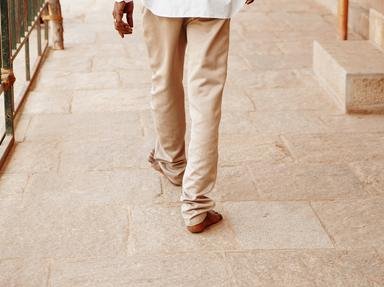Quiz Answer Key and Fun Facts
1. If engaging an oenophile, they may describe to you the "nose" of the wine they have in their hand. What do they mean by the "nose"?
2. This body part is used to describe a lane on a motorway/highway that should be kept clear and may be used by drivers if their car breaks down. Which body part is this?
3. A rather burly man tells you he's just about to tackle Fingal's Fingers. What is he most likely to be doing?
4. Palm trees are named for the fanned out leaves which resembles and outstretched hand. A palm tree is scientifically defined as being within the category known as Arecaceae. Which scientific category best describes Arecaceae?
5. Using feet to measure something does not vary depending on whose foot you use. Rather, a foot is a fixed measurement of length. Which of the following is NOT equivalent to a foot?
6. As is commonly known, the centre of a storm is known as the "eye", but what term is used to describe the (often violent) area surrounding the eye?
7. The term "mouth" can be used to describe the point at which a river empties into the sea/ocean. At which body of water will you find the mouth of the Zambezi River?
8. Though sometimes referred to as a cob, which anatomical feature can be used to refer to corn?
9. You may be able to locate the heart in your chest cavity, but in which city would you find the "Heart of Midlothian"?
10. What does the word "head" refer to when someone talks about the "head of a beer"?
Source: Author
doublemm
This quiz was reviewed by FunTrivia editor
LeoDaVinci before going online.
Any errors found in FunTrivia content are routinely corrected through our feedback system.


